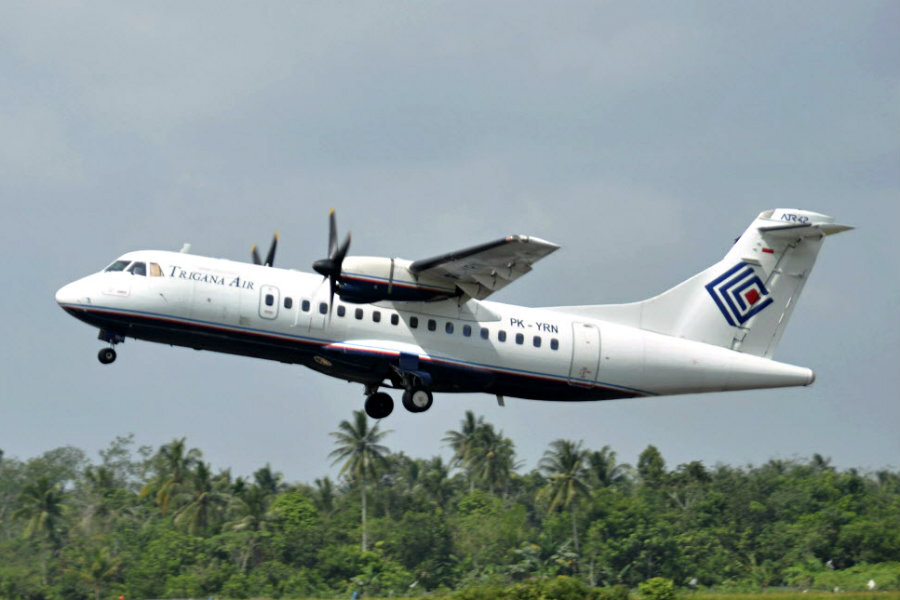Missing plane highlights Indonesia's aviation safety problems
Loading...
An Indonesian aircraft carrying 54 people went missing on Sunday over the country’s remote and mountainous province of Papua, officials say.
[Update Monday: Smoldering wreckage of the Trigana Air Service turboprop plane was spotted from the air Monday morning in a rugged area of the easternmost province of Papua, rescue officials said. There was no immediate word if there were any survivors.]
A Trigana Air Service plane lost contact in the afternoon during a 42-minute flight from the provincial capital, Jayapura, to the city of Oksibil in Papua, the country’s largest and easternmost region, Transportation Ministry spokesman Julius Barata told the Associated Press. The ATR42-300 twin turboprop plane, which was carrying 49 passengers and five crew members, made no distress calls, Mr. Barata said.
Villagers from Oksibil have reported that an aircraft had crashed in the area, and Operation Director Beni Sumaryanto said search teams would check the region Monday morning, according to Reuters.
The missing aircraft sparks a fresh wave of concern over Indonesia’s booming aviation sector, which has met criticism over safety standards and corruption in the face of a woeful safety record. As the AP reports:
After Indonesia deregulated its aviation industry in the 1990s, dozens of airlines emerged making air travel affordable for the first time for many in the world's fourth most populous nation. But accidents in recent years have raised urgent questions about the safety of Indonesia's booming airline sector, with experts saying poor maintenance, rule-bending, and a shortage of trained professionals are partly to blame.
In the last decade, the fatality rate in plane crashes in Indonesia was one per million passengers, or 25 times that of the United States, Arnold Barnett, a statistician at the Massachusetts Institute of Technology who specializes in airline safety, told The New York Times in December, following the fatal crash in the Java Sea of an AirAsia flight to Singapore.
“To assert that the disparity is only a coincidence or manifestation of bad luck would be preposterous,” Mr. Barnett said.
Indonesia’s transportation ministry in January announced harsh measures against the aviation sector, including the examination of routing permits for all airlines operating in the country. But the missing Trigana flight is already the second aircraft-related incident that made headlines since the start of the crackdown: At the end of June, a military plane crashed in Medan, Indonesia’s third largest city, killing at least 55.
Trigana Air officials said Sunday’s flight left Sentani Airport in Jayapura at 2:22 p.m. and was scheduled to land in Oksibil at about 3:16 p.m. The plane lost contact at about 2:55 p.m., Indonesia’s Mr. Barata told CNN.








